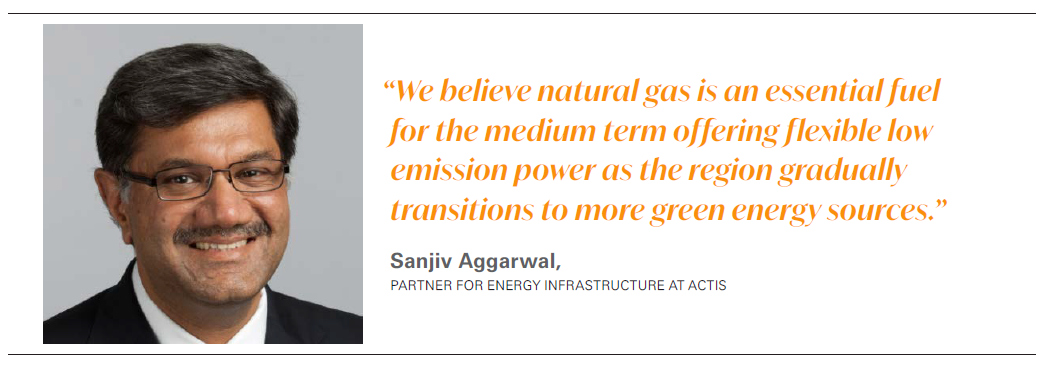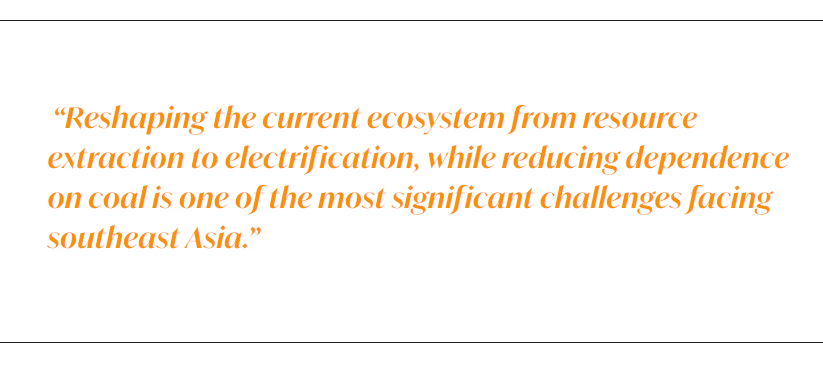Investment firm Actis banks on Asian gas-fired power [Gas in Transition]
Investment firm Actis has launched a platform in Singapore that will invest in gas-fired power projects in southeast Asia. Bridgin Power, a power generation business, will pursue gas-based power projects and “focus on delivering an equitable energy transition in southeast Asia where power demand is constantly on the rise”.
Bridgin Power recently closed its first investment by acquiring 49% shareholding in a 220-MW combined cycle gas turbine power plant in the Bhola region of Bangladesh. Bridgin acquired this stake from India’s Shapoorji Pallonji group. Bridgin Power is targeting a total portfolio capacity of 1.2 GW across the southeast Asia region by 2028.
Sanjiv Aggarwal, partner, energy infrastructure, Actis speaks with NGW about the thinking behind Bridgin Power, and the future of gas-based power in southeast Asia, at a time when global gas prices are soaring.
What is the rationale behind creating Bridgin Power?
Actis has been at the forefront of the energy transition to net zero for many years. The rationale behind Bridgin Power was to launch a business spanning southeast Asia, a region which has increasing power demands and where we can leverage Actis’ proven strategy of aggregating assets into a scalable regional platform which supports a just and equitable energy transition.
We believe natural gas is an essential fuel for the medium term offering flexible low emission power as the region gradually transitions to more green energy sources. Bridgin Power’s investment in Bhola power project in Bangladesh is a step in that direction. In addition to this, Actis is a signatory to the Net Zero Asset Managers Initiative which supports the goal of net zero gas emissions by 2050 and we recently announced our own portfolio-wide 2050 Net Zero target. Our investment in Bridgin Power will allow us to utilise our transition tool to continue our commitment as a core enabler of the global low carbon economy. Sustainability is at the core of Bridgin Power’s strategy, all investments will leverage Actis’ proprietary Impact Score and Transition Tool to identify assets that have a clear path to decarbonisation.
Why the focus on southeast Asia, Bangladesh and Sri Lanka?
Southeast Asia is a region which has strong power demand growth, and while the region is moving towards renewable adoption now, it still needs baseload power which is best procured from gas considering the environmental impacts of coal-based power. The region also has a bankable gas power PPA framework which is a key attraction for us to invest in this region. The acquisition of the Bhola asset – a 220MW combined cycle gas turbine project in Bangladesh with a 22-year US dollar-indexed PPA with the Bangladesh Power Development Board - sits squarely in this thesis and sets Bridgin on its path to create an energy platform of scale, using natural gas as a bridge to a sustainable and low carbon future.
Do you plan to expand into other Asian countries as well? How do you view large markets like India?
Bridgin Power is targeting a total portfolio capacity of 1.2 GW across the southeast Asia region by 2028. Led by a management team based in Singapore with over 100 years of combined experience in the energy and power sector, target geographies include Vietnam, Indonesia, Thailand, Philippines, Malaysia, Bangladesh and Sri Lanka. Given that India is ahead of the curve in renewables generation vis-à-vis SE Asia and other regions, our focus is on renewable power generation in India. We have the track record of developing two scale renewable platforms to date (Ostro and Sprng Energy) and are now focused on building the third such platform (Blupine Energy) which is a separate platform.
What potential do you see for gas-based power? Do you anticipate strong competition from renewables?
Reshaping the current ecosystem from resource extraction to electrification, while reducing dependence on coal is one of the most significant challenges facing southeast Asia. This is where natural gas comes into play; not just as an alternative energy source, but as the essential bridge fuel to a renewable future.
• The abundance and versatility of natural gas contributes to a dynamic energy ecosystem, supporting the switch to clean energy.
• Natural gas’ ability to provide fast and relatively low carbon power at both baseload and peak energy usage periods means it can help mitigate demand fluctuations when it comes to renewable sources. Hence investing in natural gas is not necessarily in conflict with investing in renewable energy as it provides a flexible power source when conditions are not renewables-friendly.
• Natural gas is the cleanest burning fossil fuel and emits significantly less greenhouse gas emissions than coal and other hydrocarbons. It’s widely recognised as a key catalyst in the transition to a cleaner future.
How feasible are gas-power projects in a scenario of high gas prices?
LNG based power projects in southeast Asia are expected to come online starting from 2025/26 onwards. Hence, while current LNG prices remain high, the expectation is that LNG prices would settle down to reasonable levels as; (a) the recent geopolitical events would hopefully be short-term, and (b) supply of LNG is expected to significantly increase in the next five-six years, with new large liquefaction capacities coming online.
This can be evidenced by the forward prices for gas prices or Brent crude (the index to which LNG prices are often pegged to) for periods starting 2025/26, which are at levels at which LNG based power is still cost competitive. Additionally, as mentioned earlier, countries like Vietnam, and Bangladesh need stable and low emission baseload power to support their rapid economic growth which cannot be met by renewables alone; and hence gas-based power is much needed. In addition, LNG based power is still considered to be competitive, vis-à-vis the combination of renewables plus battery storage, even on a forward-looking basis.
Let’s discuss Bridgin Power’s deal in Bangladesh
Bridgin recently closed its first investment by acquiring 49% shareholding in a 220-MW combined cycle gas turbine power plant in the Bhola region of Bangladesh. Bridgin acquired this stake from India’s Shapoorji Pallonji group, a global, diversified institution with a sector focus on engineering and construction, infrastructure, energy, real estate, water and financial services. The Bhola power plant has a 22-year PPA with Bangladesh Power Development Board and achieved commissioning in June 2021.
Are more such deals anticipated this year? Has Bridgin Power set any investment targets for 2022?
Bridgin Power‘s overall target is to achieve a scale of 1.2-GW capacity over the next five years in southeast Asia. In order to achieve this, Bridgin Power has developed a steady pipeline of opportunities across the key target markets (which can be opportunities to build greenfield projects or acquire operating/under construction assets). Hence, Bridgin power is evaluating multiple investment opportunities in the gas power space at any point in time.



